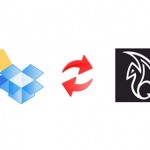James Whiffin takes an in depth look at using Motion Vectors for production showing setups in Autodesk Maya using Mental Ray, and with compositing and using Motion Vector information in Nuke and After Effects.
This tutorial goes in-depth into using motion vectors for production. We’ll look at their limitations and how to solve those problems
Creating a beauty pass render alone is fine for tests and style frames, however in the end you really want to be generating multiple passes for every component of the rendered image to remain flexible in pst production. Rendering a Motion Vector pass will essentially render motion blur information without actually rendering the motion blur at all, providing a speed increase in render times, and the flexibility of better controlling the motion blur in a compositing application such as After Effects or Nuke. Of course with After Effects you need some 3rd party tools to be able to use Motion Vectors effectively, using REvision Effect’s RSMB (reelSmart Motion Blur), where Nuke has built in tools to handle such a composite. Check out the article for An In-Depth Look At Working With Motion Vectors here.

